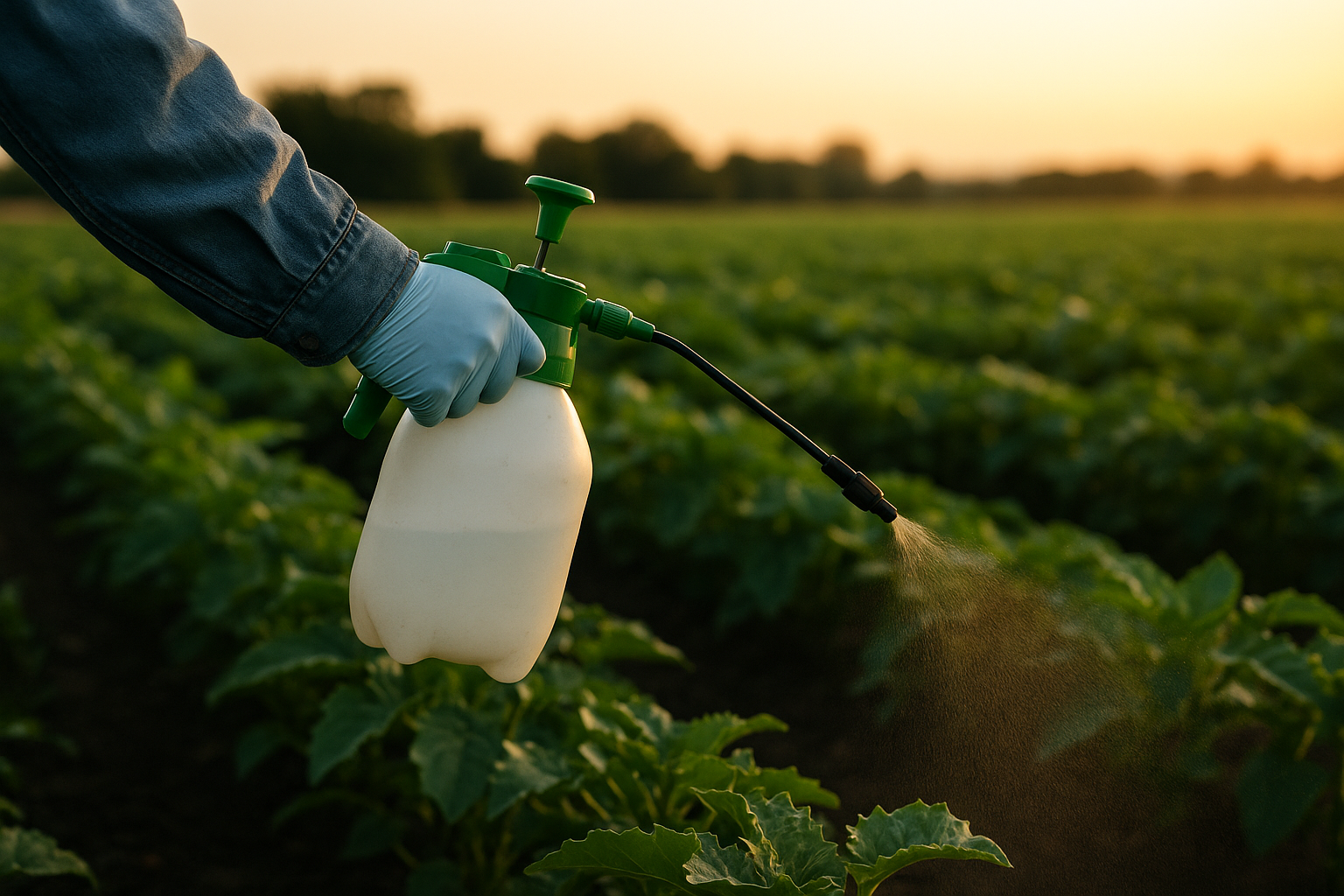Nanopesticides and smart biosensors could transform global farming practices
Nanotechnology offers multiple advantages over conventional formulations. Its high surface-to-volume ratio enhances adherence to plant surfaces and improves penetration, increasing efficiency. Moreover, nanoencapsulation shields active compounds from environmental degradation, prolonging their effectiveness while reducing the frequency of applications. By responding to environmental triggers such as pH or temperature, nanopesticides ensure that chemicals act only when and where they are needed.

A new scientific review warns about the environmental and health hazards linked to conventional pesticide use. The research points out the urgent need for innovative pest control alternatives to protect ecosystems and human health while ensuring global food security.
Published in Agronomy, the study "Environmental and Health Impacts of Pesticides and Nanotechnology as an Alternative in Agriculture", the study compiles extensive evidence of the damage caused by pesticide overuse and explores nanotechnology as a transformative solution for sustainable farming.
What are the risks posed by conventional pesticides?
Pesticides have been central to agricultural productivity, helping feed a growing global population expected to surpass 10 billion by 2050. However, their benefits come at a significant cost. The review details how pesticide residues infiltrate soil, water bodies, and food products, leading to ecological imbalance, biodiversity loss, and bioaccumulation of toxic compounds. These chemicals persist in the environment long after their application, disrupting beneficial organisms such as pollinators, soil fauna, and aquatic life.
The authors reveal that chronic exposure to pesticides contributes to severe human health problems. The evidence links these chemicals to oxidative stress and genotoxic damage, mechanisms associated with chronic diseases such as cancer, Parkinson’s disease, Alzheimer’s, endocrine disorders, immune system dysfunction, and premature aging. Vulnerable populations, particularly agricultural workers, children, pregnant women, and rural communities, face the highest risks due to prolonged or intense exposure.
The review highlights that the dangers extend beyond immediate toxicity. Even low levels of pesticide residues in food can trigger long-term health effects, including hormonal disruptions and reproductive issues. Findings suggest that many commonly used pesticides are mutagenic, capable of altering DNA and accelerating cellular damage. Despite regulations, a substantial percentage of food products continue to exceed permissible residue limits, posing risks to consumers worldwide.
How does nanotechnology offer a safer alternative?
Against this backdrop, the research presents nanotechnology as a promising pathway to mitigate the damage caused by traditional pesticides. The authors detail how nanopesticides, engineered at the nanoscale, can revolutionize pest control by enabling targeted delivery, controlled release, and enhanced stability of active ingredients. This precision reduces the quantity of chemicals required, minimizing environmental contamination and human exposure.
Nanotechnology offers multiple advantages over conventional formulations. Its high surface-to-volume ratio enhances adherence to plant surfaces and improves penetration, increasing efficiency. Moreover, nanoencapsulation shields active compounds from environmental degradation, prolonging their effectiveness while reducing the frequency of applications. By responding to environmental triggers such as pH or temperature, nanopesticides ensure that chemicals act only when and where they are needed.
The study also points to nanobiosensors as a critical innovation. These devices allow real-time monitoring of pesticide residues, soil health, and pest activity, enabling farmers to make data-driven decisions and reducing reliance on broad-spectrum chemical applications. The integration of smart technologies can significantly enhance sustainability in agriculture while protecting human health.
Despite these benefits, the authors caution that nanotechnology is not without challenges. Potential risks include long-term toxicity, bioaccumulation in non-target organisms, and regulatory gaps. Current laws do not adequately account for the unique behaviors of nanomaterials, leaving uncertainties about their environmental and health impacts. The paper calls for robust interdisciplinary research to address these gaps and ensure the safe development and application of nano-based solutions.
What path forward does the study recommend?
The review calls for a paradigm shift in agricultural pest management. While acknowledging that conventional pesticides remain indispensable in many farming systems, the authors emphasize the urgent need to adopt preventive, responsible, and sustainable practices. They advocate for stricter regulations to limit pesticide overuse, better monitoring of residues, and enhanced farmer education on safe handling and integrated pest management.
Investment in nanotechnology research is identified as a critical priority. The authors argue that with adequate regulatory frameworks and support from public policies, nanoformulations and smart monitoring tools can dramatically reduce the ecological footprint of agriculture. By minimizing the use of toxic compounds and improving their efficiency, nanotechnology has the potential to safeguard biodiversity, protect vulnerable communities, and ensure the long-term fertility of agricultural soils.
International cooperation is equally crucial in establishing uniform safety standards for nanotechnology-based agricultural products. Developing countries, where pesticide misuse is often widespread and safety practices are inadequate, would particularly benefit from updated laws, farmer training, and infrastructure improvements.
In a nutshell, the study asserts that nanotechnology is not a silver bullet but a crucial component of a broader strategy to transition toward more sustainable, efficient, and safe agricultural practices. It underscores the importance of combining scientific innovation with evidence-based policy to strike a balance between food production needs and environmental stewardship.
- FIRST PUBLISHED IN:
- Devdiscourse










